
by: SEO Strategist
Ashot Nanayan
Ashot Nanayan is the CEO and Founder of DWI and a seasoned SEO strategist. With a proven track record of...
All Articles by Ashot Nanayan
December 16, 2024
25 min read
Guest posting is your golden ticket to building authority, driving traffic, and boosting your search rankings like never before. But, of course, not all guest posts are created equal. Posting random articles on low-quality sites is no longer effective. The game has evolved, and it’s time to level up your approach.
In this blog, I’ll guide you through every step of the guest posting process, from identifying the perfect websites to crafting appealing pitches. We’ll dive into the must-have tools that save you time (and headaches), uncover advanced techniques that give you an edge, and even analyze real-life case studies to show you what works (and what doesn’t).
I’m here to break down the crucial details, give you actionable insights, and arm you with everything you need to turn guest posting into an SEO weapon. Whether you’re a seasoned pro or just starting out, you’ll walk away with strategies you can implement today.
Ready to take your guest posting game to the next level? Stick with me, this blog will give you everything you need to dominate the SERP. Let’s get started.
In simple terms, guest posting is the practice of creating content for a website where you want to naturally promote your brand and earn a backlink to your website. But how does this work?
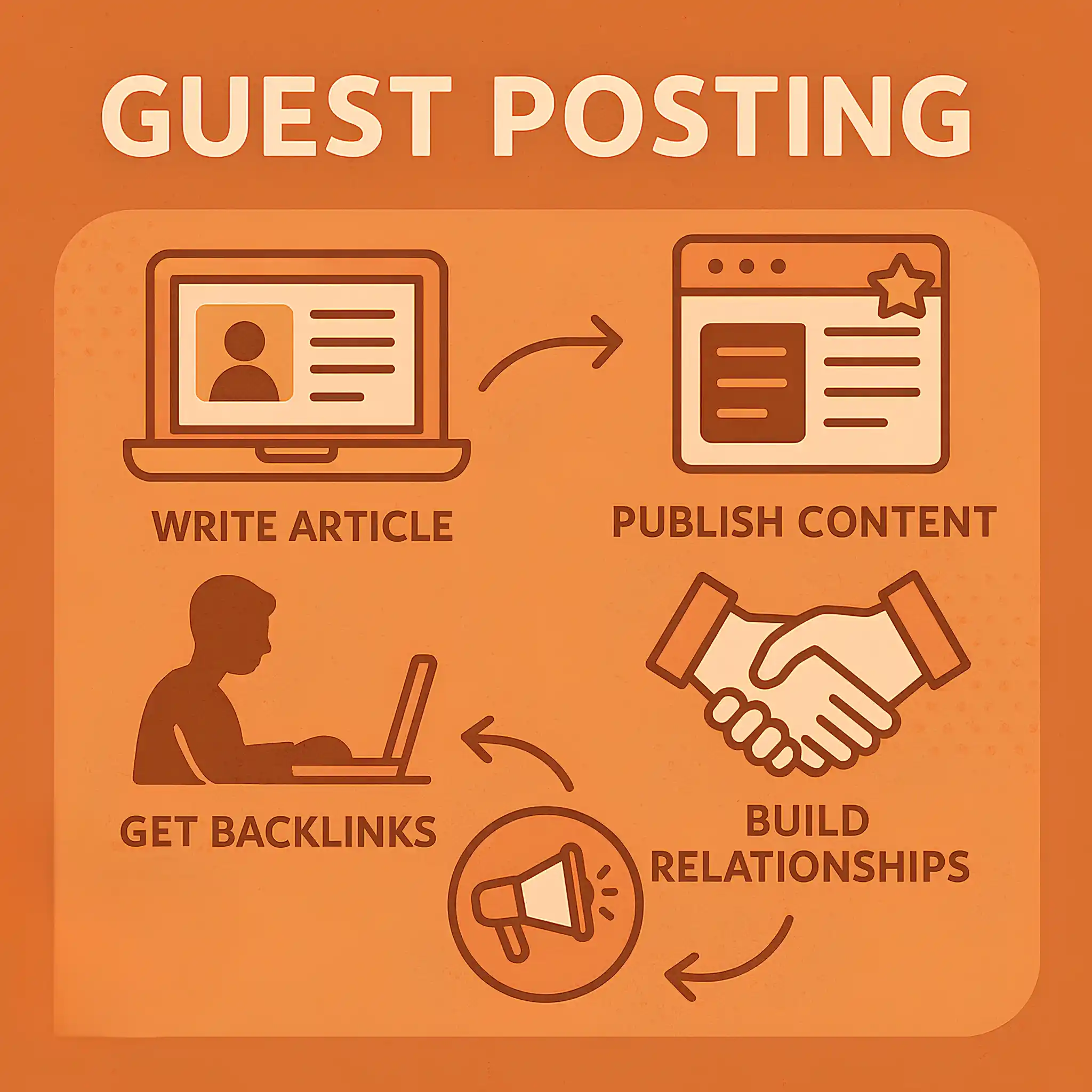
Guest posting originally was a collaborative practice where experts in a particular field could share their knowledge and insights with a broader audience by contributing articles to other websites or blogs and earning a brand mention in return.
This arrangement was a win-win: guest authors got to show they’re experts and build their reputation, while the host websites received great content that their readers enjoyed.
To be considered for a guest post, authors typically needed to prove their expertise such as sharing writing samples, professional credentials, or past publications that showcased their knowledge and writing ability.
For example, an environmental scientist might submit previous articles on climate change to demonstrate their authority on the subject.
The primary goal was to offer unique insights, in-depth analysis, or practical advice that aligned with the host site’s audience interests. The content had to be original, well-researched, and add genuine value to readers.
However, over time, the landscape of guest posting began to shift. The rise of search engine optimization and the recognition of backlinks as a significant ranking factor led to a change in how guest posting was perceived and utilized.
Some website owners started charging authors fees to publish guest posts. The practice turned into a transactional exchange where the primary focus was on obtaining a backlink rather than sharing quality content.
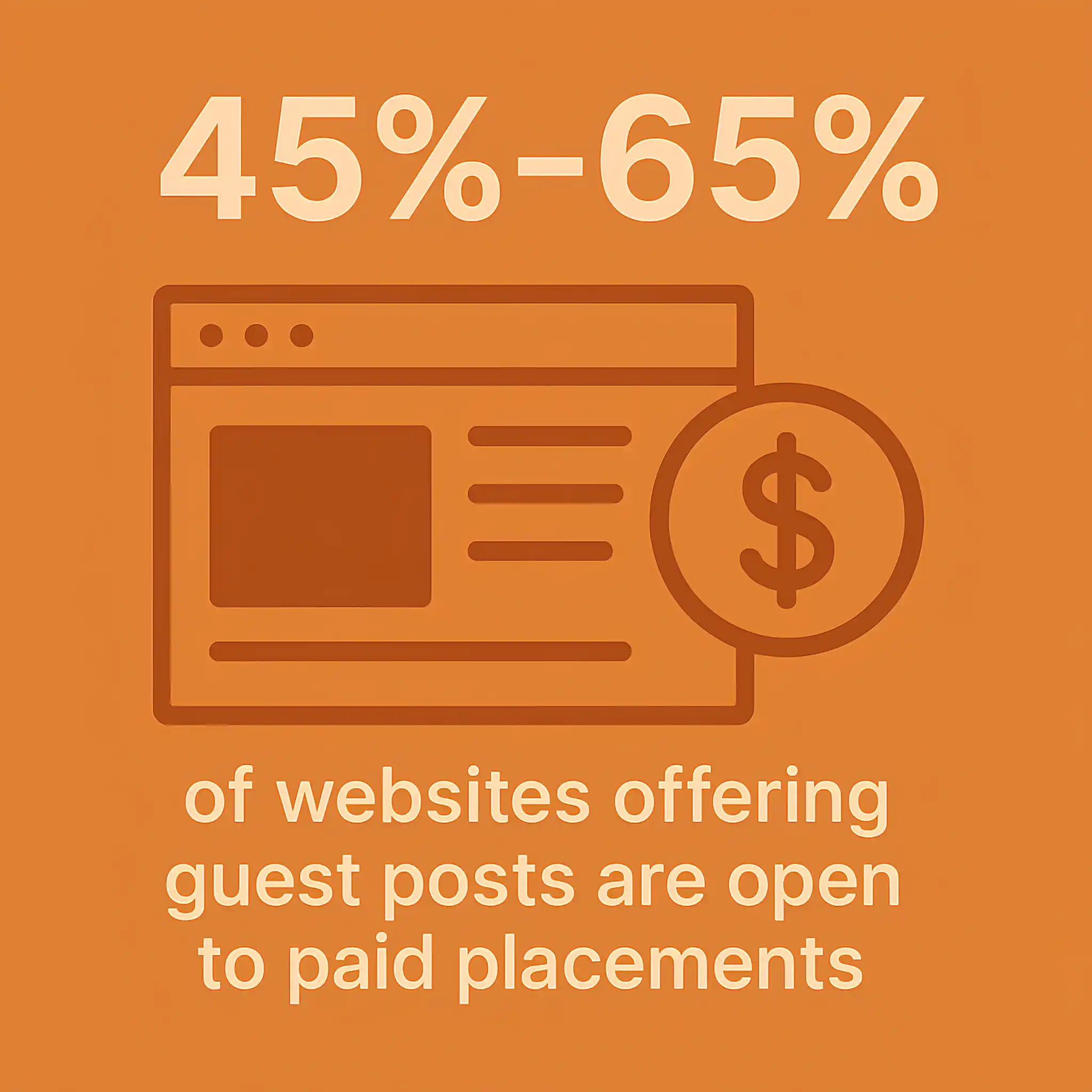
Articles became saturated with keyword-rich anchor texts and promotional links, sometimes at the expense of relevance and reader value.
In response, search engines like Google updated their algorithms and guidelines emphasizing the importance of natural, organic backlinks. Readers became wary of low-quality content filled with promotional links and many reputable websites reinstated strict guest posting guidelines, requiring authors to demonstrate expertise and provide high-quality, valuable content.
“Is guest posting still worth it?” It’s a question I get asked a lot. Honestly, I know; there’s so much noise in the SEO world, so many people swearing that one strategy is better than the next.
Yes, guest posting or guest blogging is still worth it. It has been one of the most effective and commonly used link-building techniques in the last few years. Guest posting offers several advantages:
Guest posting is no longer about writing content for random free guest blogging websites just to grab a link. Guest posting isn’t quick or easy anymore. You can’t just write a half-hearted post, send it to a site that takes anyone, and expect results.
Those days are gone. You should craft high-quality content, high-authority sites, and most importantly, high relevance to your audience. So, is guest posting still worth it? Hell yes, when you do it right.
💡 On average, 7.8% of outreach emails for guest posting received replies.
💡 Among the responses, 45%-65% of website owners requested payment for guest post placements.
💡 Technology (25%), Health & Wellness (18%), and Finance (15%) were the most in-demand niches for guest posting opportunities.
💡 78% of surveyed blog owners preferred content exceeding 1,500 words, emphasizing detailed, high-value articles.
💡 The average cost for guest posting on websites with a Domain Rating (DR) above 50 was $250-$500, while websites with a DR under 30 charged between $50-$100.
💡 43% of websites published guest posts within a week, but 22% reported delays exceeding 30 days.
💡 The most common reasons for rejection included irrelevant content (3%), poor grammar (5%), and overly promotional tone (11%).
💡 Emails with personalized introductions (e.g., referencing specific blog posts) achieved a 40% higher response rate than generic templates.
These insights highlight the importance of crafting personalized outreach, focusing on quality content, and understanding niche-specific trends in guest posting.
According to statistics, 71% of marketers say guest posting on industry blogs is their top method of acquiring quality backlinks
At Digital World Institute (DWI), we use data-driven strategies to power guest posting services that deliver real, measurable growth. If you’re ready to turn high-authority placements into consistent traffic and sales, let’s talk about how we can make it happen for your business.
Link-building is a highly time-consuming process due to several factors that require significant effort, strategy, and ongoing attention. You must research and identify relevant, authoritative sites within your niche that accept guest posts, niche edits, or other forms of collaboration.

Sometimes, you should vet dozens or even hundreds of websites for quality, audience relevance, and domain authority. Reaching out to website owners or editors takes time, and not all link-building outreach efforts result in a positive response, meaning multiple rounds of follow-ups may be needed.
In many cases, especially with guest posting, you’ll need to produce high-quality, unique content that meets the standards of the publication.
Here are the exact steps you should follow to secure a link from a guest post.
I’m sure many similar guides recommend using Google search operators (e.g., “keyword” + “guest post” or “submit a guest post”), taking advantage of social media, or using similar techniques, but here is what really works.
Stealing backlink opportunities for guest posting or other white hat link-building techniques is highly effective. You can identify high-quality sites that may also be open to publishing your content because they did the same for your competitors.

However, it’s important to remember that not all links are created equal. Just because a competitor has a link from a particular site doesn’t mean it’s automatically beneficial for you. Some backlinks may come from low-quality or irrelevant websites, which could harm your site’s authority rather than improve it.
You can analyze your competitor’s backlinks specifically originating from guest posting opportunities using Ahrefs Here’s a step-by-step guide:
Enter the domain of your competitor and navigate to the Backlinks tab under Site Explorer.
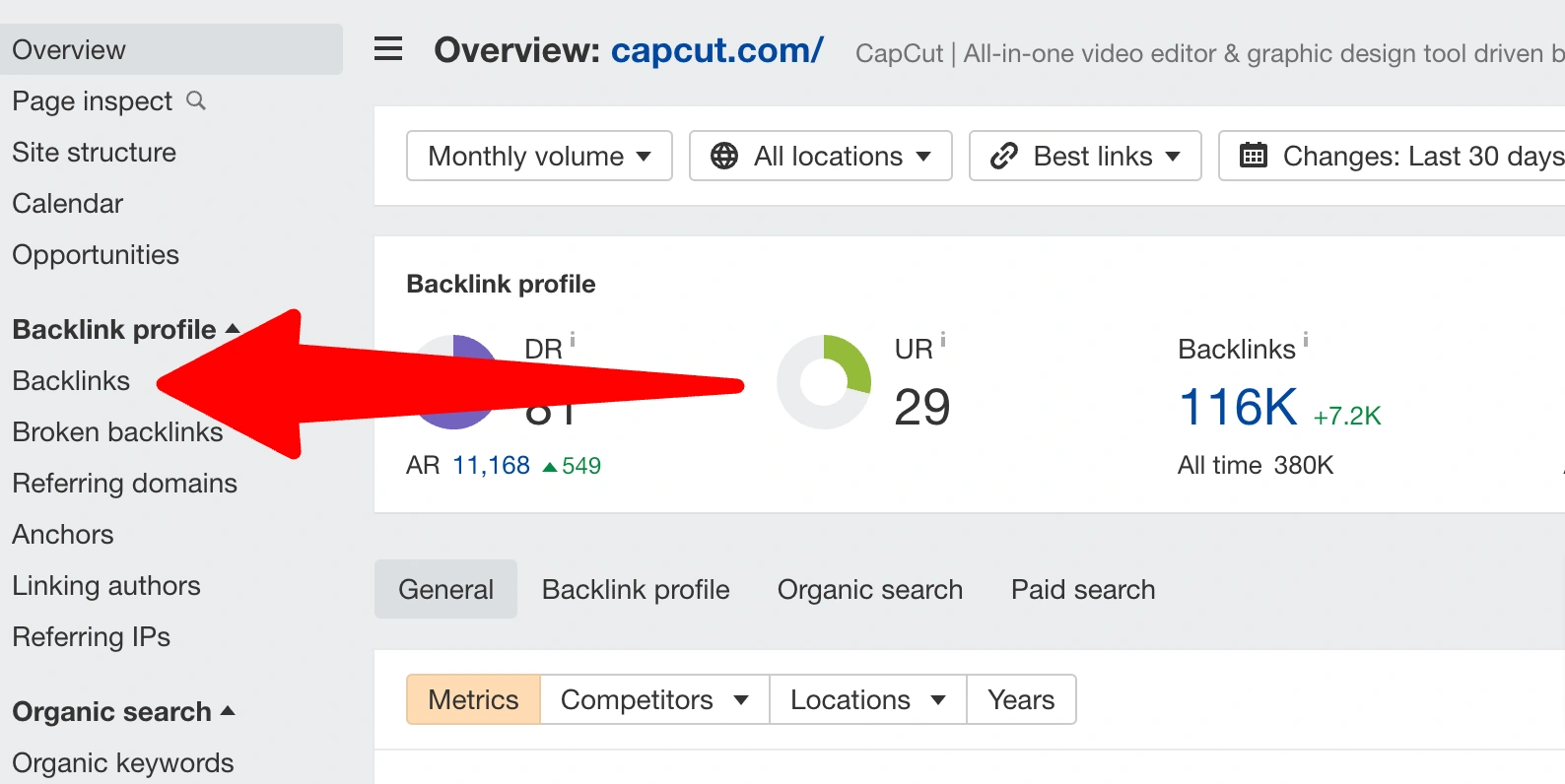
Apply filters to narrow down results
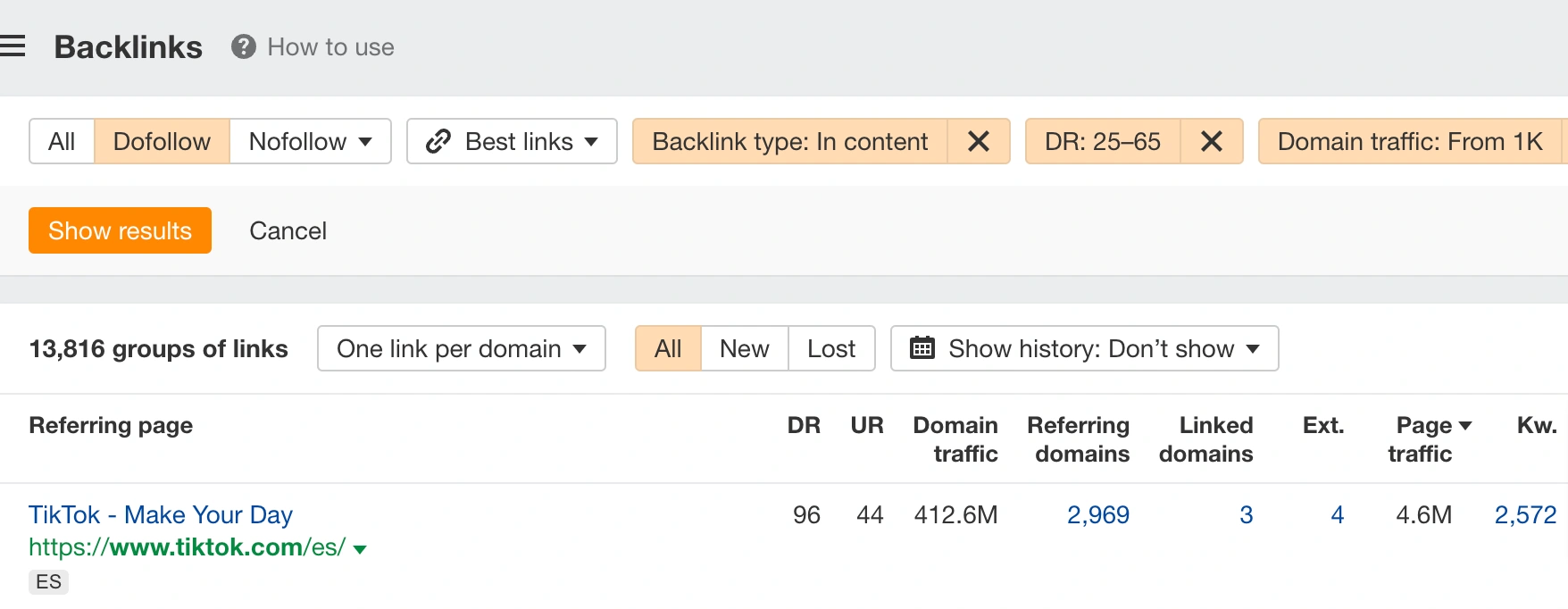
Most guest post backlinks will be dofollow. Choose platforms likely to host guest posts (e.g., blogs, content sites).
Look for common guest post patterns
URL Patterns
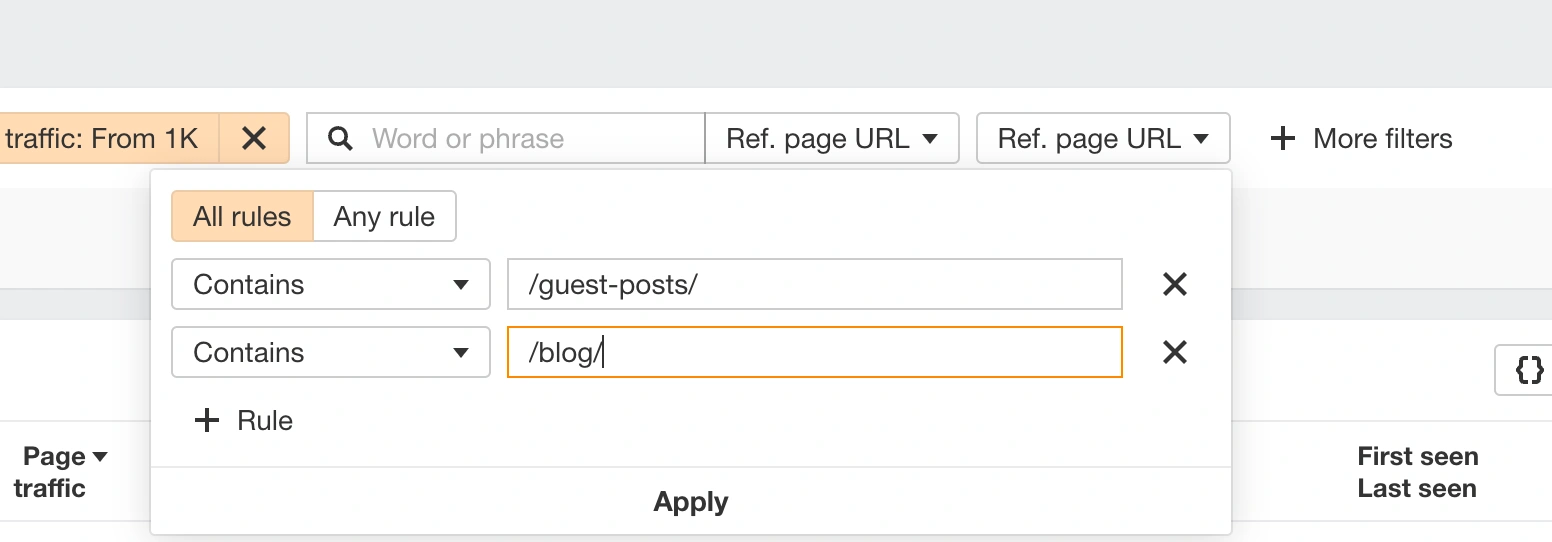
Apply a “Include” filter with these keywords in the URL or referring page. Inspect referring domains. Look for websites that commonly host guest posts (e.g., blogs, niche content platforms). Check for websites with “Write for Us,” “Contribute,” or similar pages.
Inspect the referring pages to confirm guest posting characteristics such as author bios mentioning your competitor, blog articles written by your competitor or under their brand name, or in-content links that direct to your competitors’ money pages (Service or collection pages, etc).
Next, export the backlinks for deeper analysis. Use filters to sort for high domain rating (DR) and relevant referring domains with quality organic traffic.
Visit the referring domains and check if they have guidelines for guest posting or are openly accepting contributions.
To accurately identify which backlinks are from guest posting, here are some key signs to look for:
Author Bio or Contributor Box: Guest posts typically include an author bio or a contributor box at the end of the article with a link back to the guest author’s site. This is a strong indicator that the backlink was earned through guest posting.

Explore Relevant Pages: To spot relevant guest blogging opportunities, keep an eye out for pages like “Work With Us,” “Guest Post,” or “Contribute.” These are often clear signs of content partnerships or guest contributions.
Sometimes, I also investigate the backlink profiles of my client’s indirect competitors to find untapped guest posting opportunities. I understand that indirect competitors may offer different products or services but sometimes they attract a similar audience or share related content.
Indirect competitors often produce content in related areas that complement your niche, such as informational articles or blog posts that serve a similar audience.
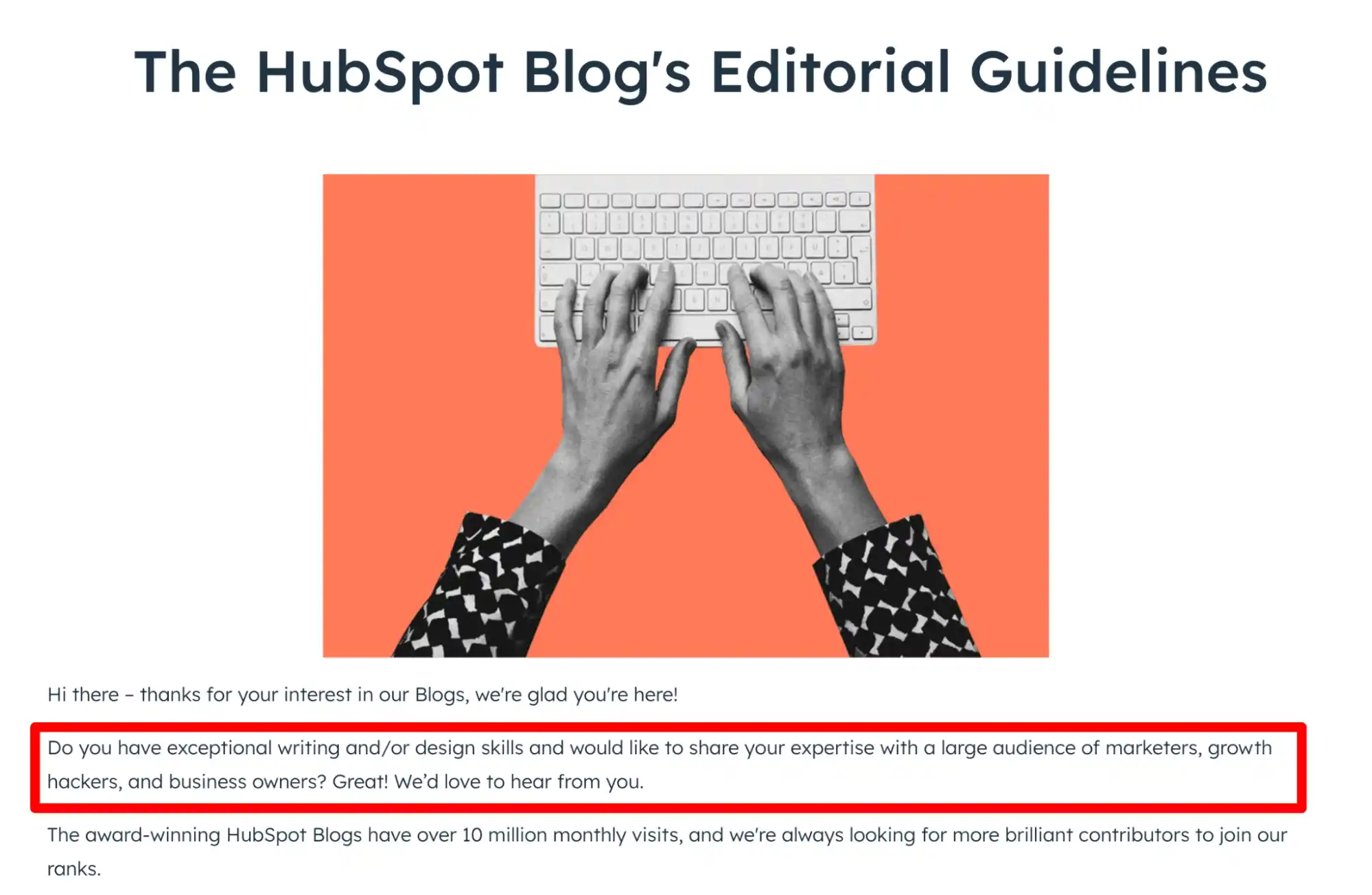
Ideal Anchor Texts: Another key indicator is when the anchor text is specifically optimized for money pages; the high-value pages that drive conversions, such as product or service pages. If the anchor text is an exact match for a keyword or phrase that the competitor is likely targeting for SEO purposes (e.g., “buy organic skincare products” or “best accounting software”), it’s a strong sign that the backlink was acquired through paid guest posting or niche edits.
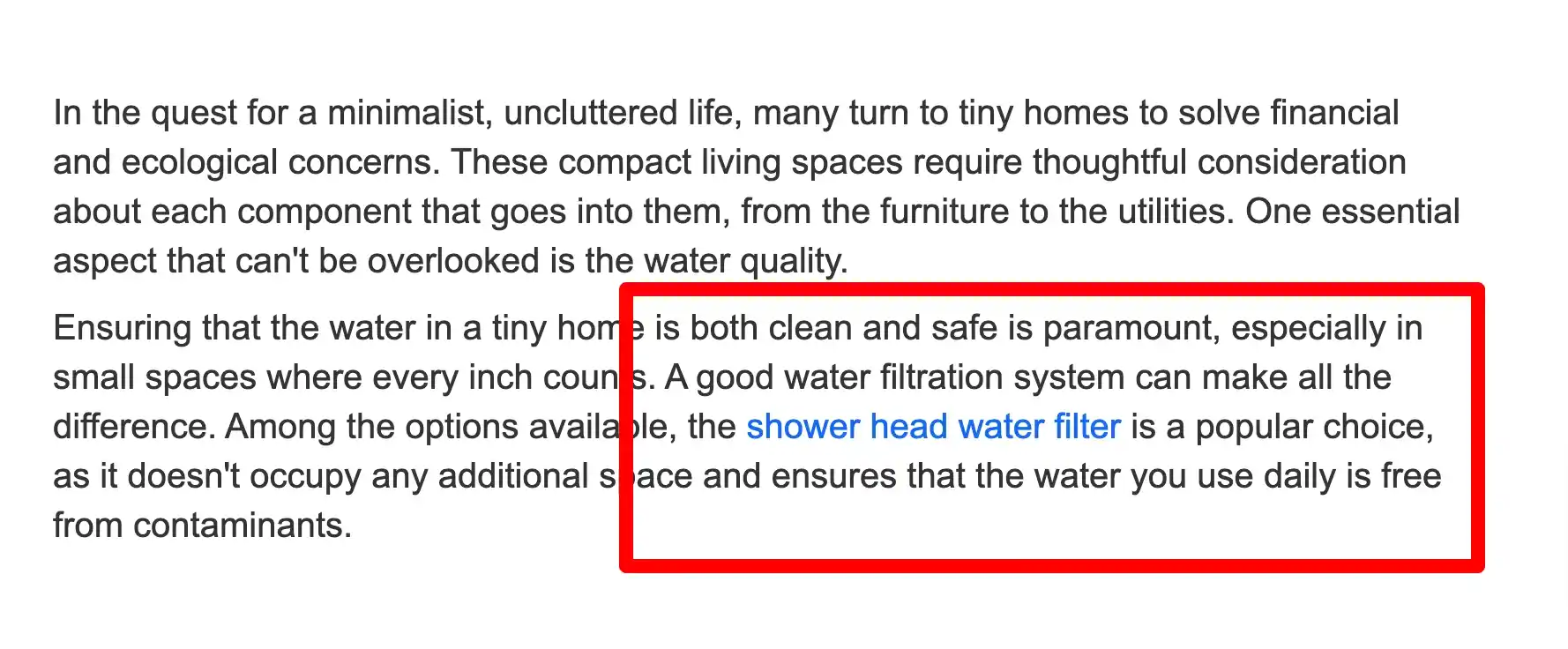
Finally, In guest posts or link insertions, the anchor text often appears within a contextually relevant sentence, pointing directly to a money page. This differs from naturally earned links, which may have broader, more neutral anchor texts like the brand name, the URL, or generic terms like “click here.” In contrast, links acquired through deliberate strategies tend to be more keyword-focused.
In my comprehensive guide on link-building fundamentals, I already recommended my favorite list of link-building software. Pitchbox is one of those link-building automation tools that streamlines the process of finding websites, influencers, and opportunities for guest posting, link insertions, and other collaborations.
It automates much of the boring work involved in outreach campaigns, from identifying potential websites to sending personalized pitches and following up with contacts. One of Pitchbox’s standout features is its ability to help users identify relevant websites by utilizing topic ideas, making it a powerful tool for discovering guest posting opportunities.
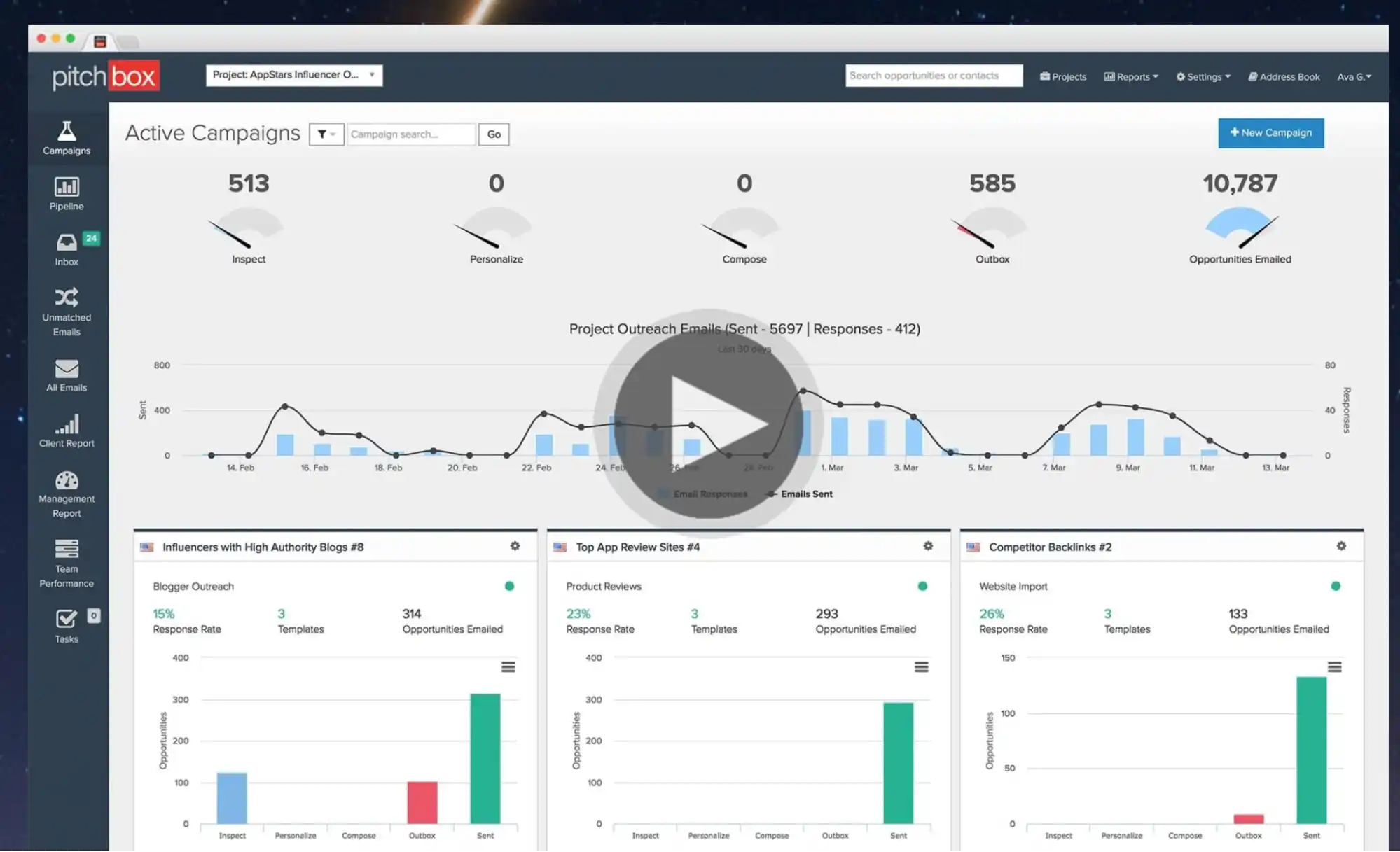
Pitchbox has the ability to match you with relevant websites based on the topic ideas you suggest. Here’s how it works:
Input Topic Ideas: When starting your outreach campaign, you can suggest a range of topics (over 10, for example) that are relevant to your niche or the type of content you want to contribute. These topic ideas can range from broad industry trends to specific insights, depending on the type of guest post or collaboration you’re aiming for.
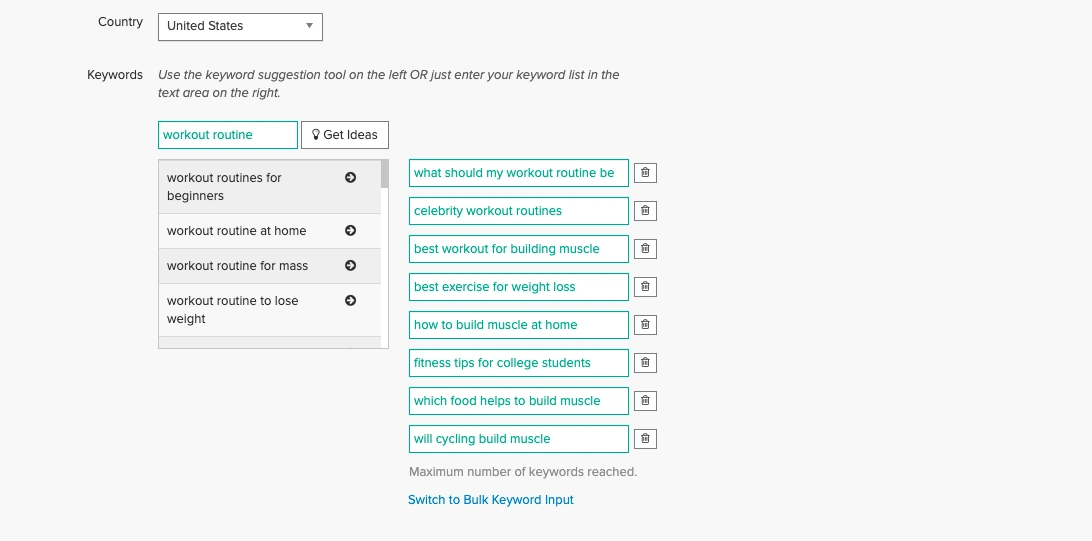
Pitchbox’s algorithms analyze the requested topics and scours its vast database of websites, blogs, and publications that have covered similar themes in the past. You can also filter websites by a variety of metrics such as Ahrefs organic traffic, DR, MOZ DA, Majestic TF & CF, etc.
Once you’ve identified relevant websites, Pitchbox enables you to send personalized pitches, including customized content ideas that match their editorial focus.
Have you ever tried Ahrefs’ Content Explorer? It’s not your typical tool for this kind of task, but that’s what makes it so powerful. With a few smart searches, you can uncover relevant guest blogging opportunities that most people overlook. it’s kind of exciting when you see the potential laid out right in front of you. Let me show you how it works.
Log in to Ahrefs and go to the Content Explorer tool.
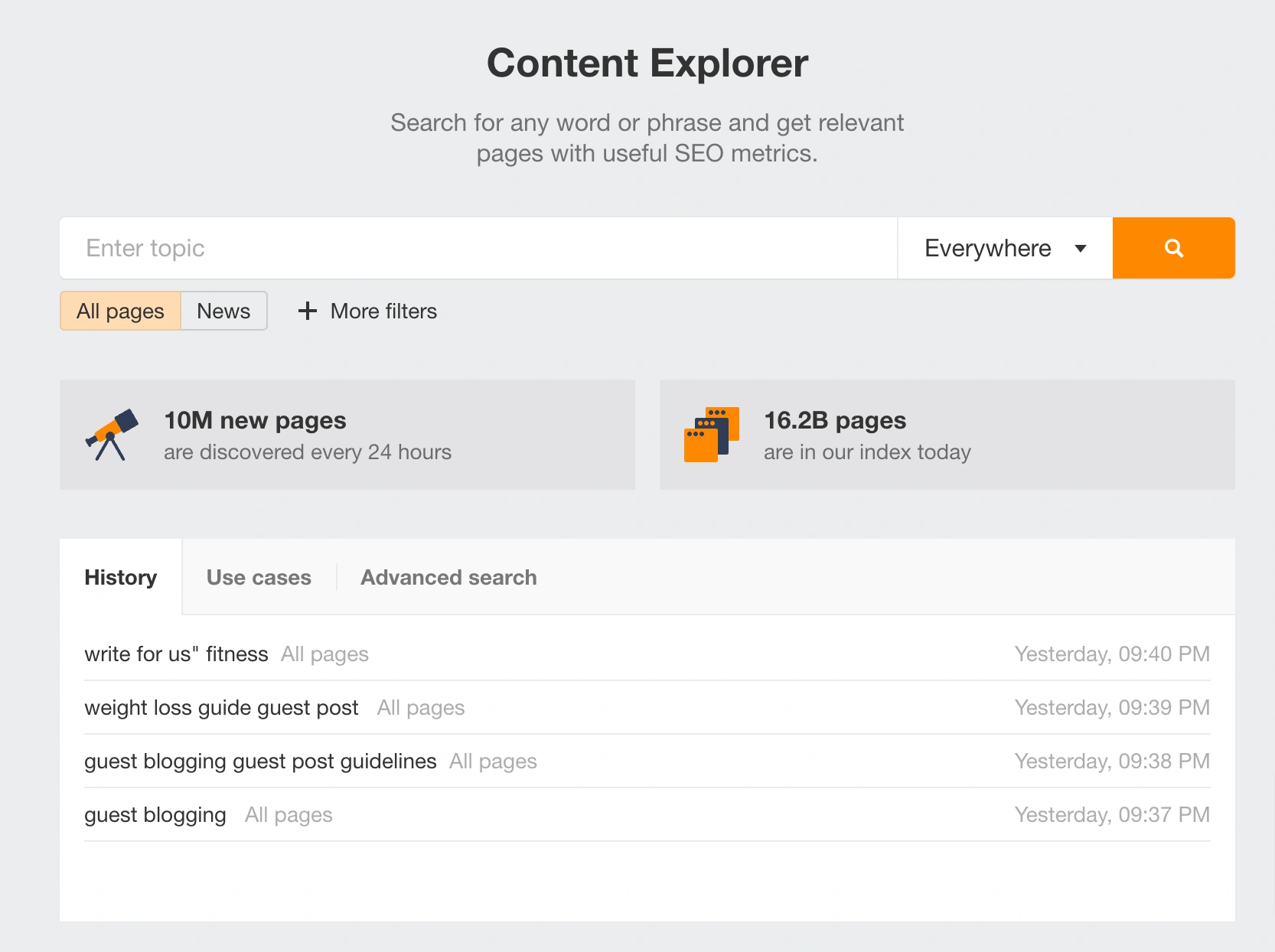
Enter search queries: Use keywords commonly associated with guest posting opportunities. For example:

Combine these with your niche keywords, e.g., “write for us” fitness or “submit guest post” technology. You can also apply filters such as DR, organic traffic, language, etc.
Here is an example:
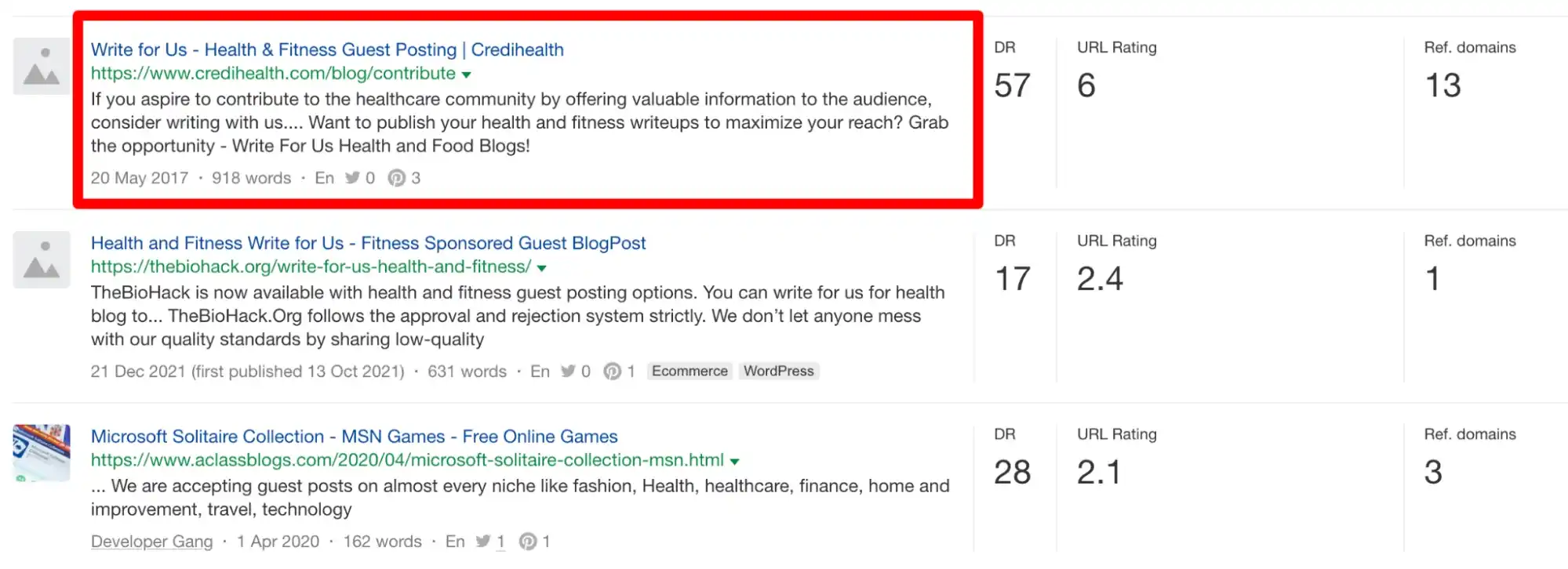
Analyze Results: Look for relevant articles or pages from websites that mention guest posting guidelines. Check the URL structure and content to confirm the site accepts guest bloggers.
For example:
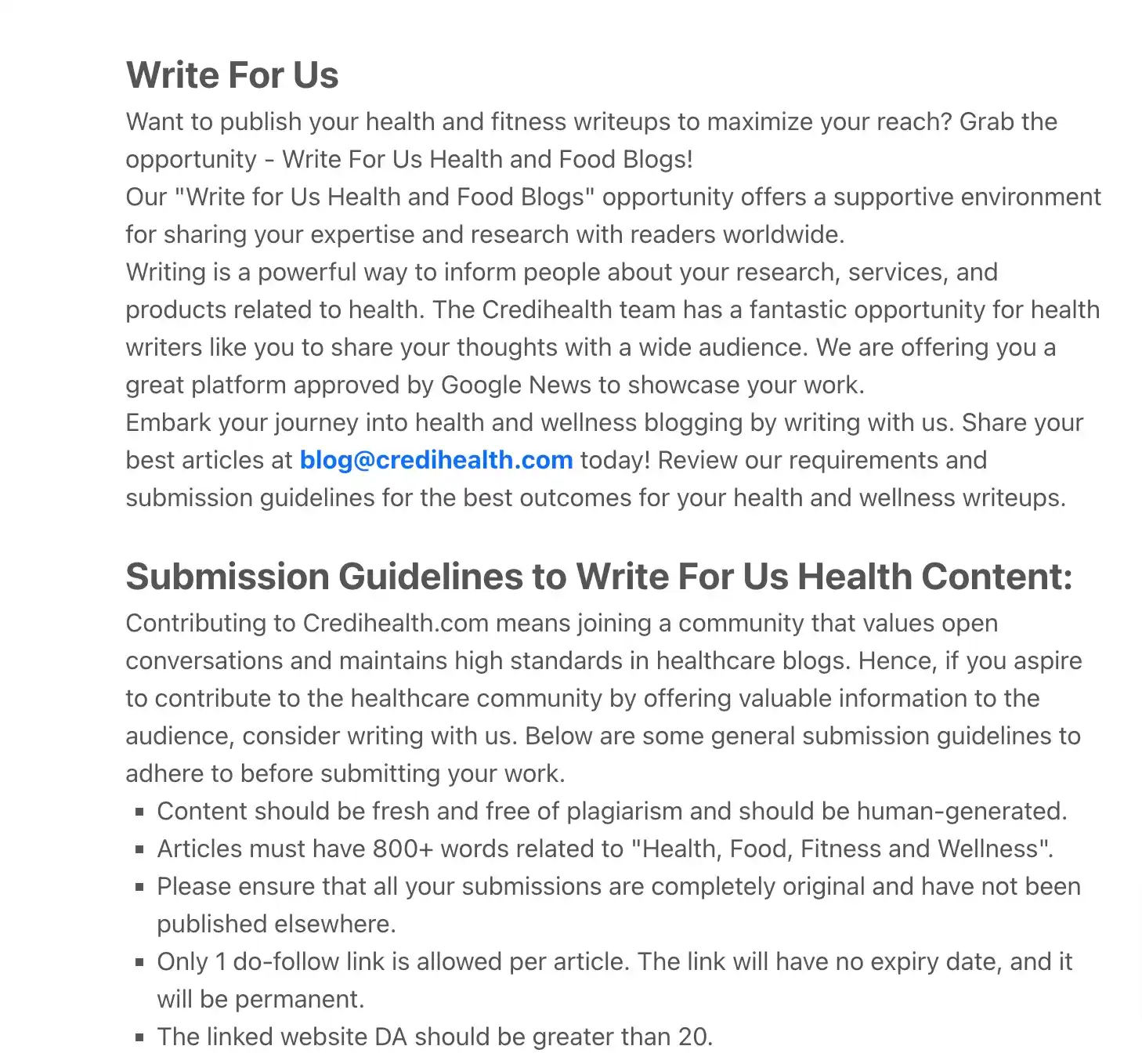
Yep, simple and effective.
Don’t pick the biggest competitors, as most of their backlinks are likely naturally earned. Instead, start investigating smaller or average competitors who struggle to secure links, just like you.
For instance, if you’re building backlinks for an eCommerce store, Amazon and eBay may not be suitable choices, even if they sell similar products to yours.
You can find new guest blogging opportunities by identifying and following blogs that regularly feature guest writers. Look for blogs in your niche with published articles written by guest contributors.
Subscribe to their newsletters or RSS feeds to stay updated on new posts and guest authors. Follow them on social media platforms like Twitter, LinkedIn, or Facebook for updates about guest writing opportunities.

Check the bylines of guest writers and see if they’ve contributed to multiple blogs. This can lead you to other websites accepting guest posts. Use Ahrefs’ Content Explorer or Google searches to track down where these writers have been published.
Finally, you can comment thoughtfully on posts to build rapport with the blog owner or editor.
Finding new guest post opportunities by contacting authors of existing guest posts is one of those under-the-radar strategies that can deliver a goldmine of connections. It’s like walking into a room where the networking groundwork has already been laid out for you; you just have to build on it. Let me show you how to do this like a pro.
Start by looking for guest posts already published in your niche. You’ll often spot these by looking for an author bio at the bottom that introduces the writer as a guest contributor.
Now, you can do this manually by searching “your niche + guest post” on Google or if you’re feeling fancy, head straight to Ahrefs Content Explorer.
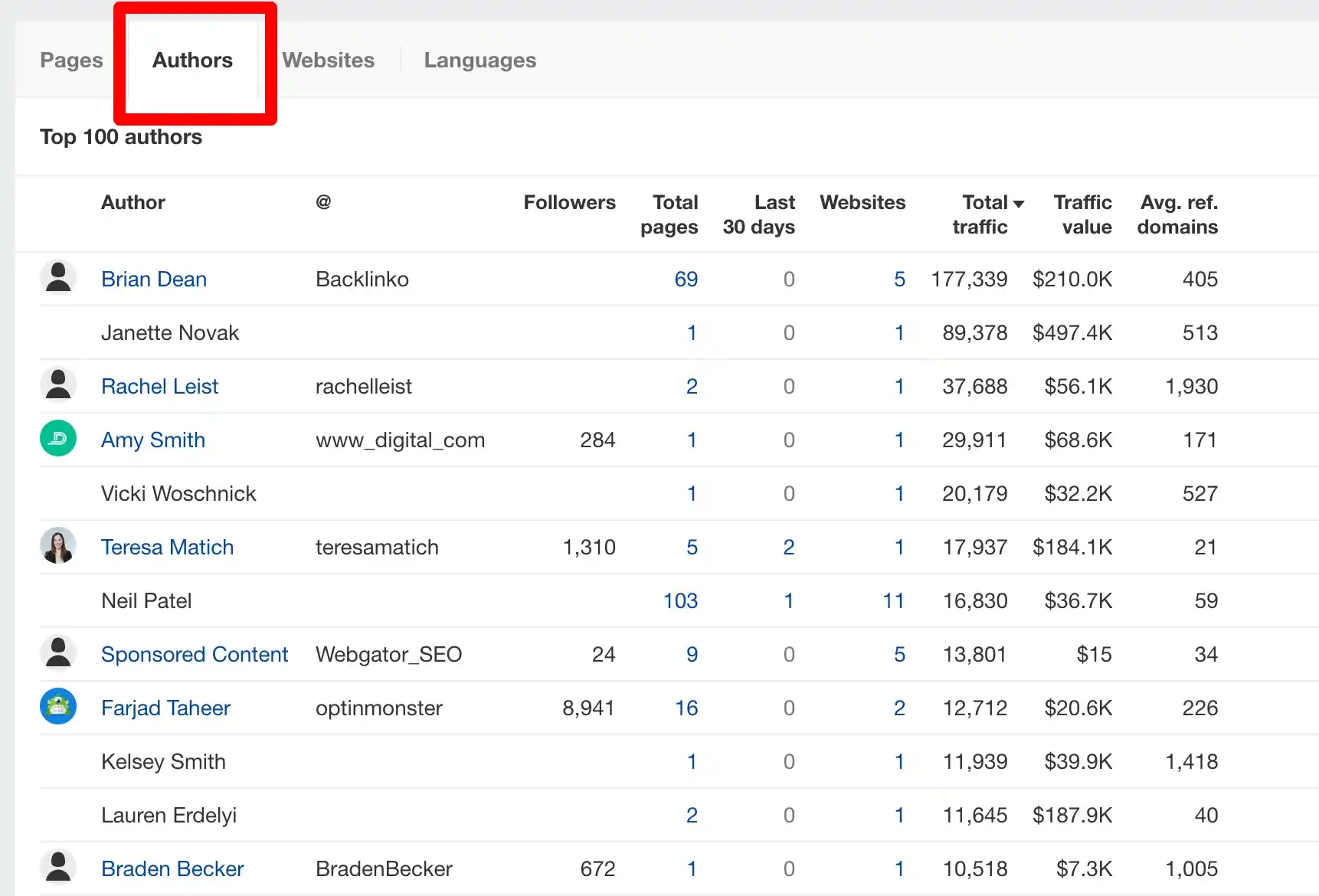
Once you’ve spotted a guest post, click on the author’s name or bio. Often, they’ll have a LinkedIn profile, a personal website, or a social media handle linked right there. This is your chance to dig deeper into their portfolio and see where else they’ve written.
If you notice a pattern: multiple guest posts on various sites, bingo! This person clearly has connections. Their published work can lead you to blogs that actively accept guest posts, giving you a list of ready-made opportunities.
These authors were once in your shoes, and they’re proof that your guest post aspirations are entirely possible.
Alright, imagine this: You have a golden list of prospects in your hands; people or sites that could open doors to incredible guest posting opportunities. However, not every door is worth knocking on.
In simple words, vetting is the process of evaluating the quality and relevance of the websites you identified during prospecting. The goal is to filter out low-quality sites, spammy domains, or sites that aren’t aligned with your target audience.

Some sites might look seem like a great fit on the surface but lack the authority, audience, or engagement you need to make your guest post worthwhile. Worse, if you post on the wrong site, say, one with spammy links or a poor reputation, it could hurt your credibility more than help it.
So, before you dive headfirst into outreach, take a moment to really dig into each prospect. Check the following metrics:
Check the website’s existing outbound links. If the site links to spammy or low-quality content, it’s a red flag. High-quality sites link to authoritative and relevant sources.
Assess the quality of the site’s content. Look for well-written, informative articles that provide value to readers. Avoid sites with thin, low-quality, or duplicate content.
Check for signs of spam, such as excessive ads, broken links, or a history of selling links. Avoid PBN links and link farms.
Make sure the website has sustainable organic traffic and a traffic history of at least a year. Try to distinguish between quality (real) and relevant traffic and fake traffic.
Make sure the website’s content is aligned with your niche or industry. A backlink from a highly relevant site is much more valuable than one from a generic or unrelated domain.
After prospecting and vetting, you should have a finalized list of high-quality, relevant websites that are ideal for guest posting.
Effective outreach begins with writing personalized emails or pitches to each website on your vetted list. Avoid generic or mass emails; instead, customize your message to each website by highlighting mutual benefits, pitching relevant topics, or referencing recent content.
Here are 5 outreach email templates for guest posting:
Hi [Recipient’s Name],
I’ve been following [Website Name] for some time, and your recent article on [Topic] was incredibly insightful. As a [your profession/area of expertise], I specialize in [relevant niche], and I’d love to contribute a guest post to your blog.
Here are a few topic ideas I believe would connect to your audience:
[Topic Idea #1]
[Topic Idea #2]
[Topic Idea #3]
I’m confident I can deliver well-researched, actionable content that aligns with your blog’s tone and standards.
Would you be open to discussing this further?
Looking forward to hearing your thoughts!
Best regards,
[Your Full Name]
[Your Website/Portfolio Link]
Hi [Recipient’s Name],
I came across [Author’s Name]’s guest post on [Topic] and found it incredibly valuable. It inspired me to think about [related topic idea], which I believe would complement their article perfectly.
I’d love to write a guest post for [Website Name] exploring this topic in-depth and providing actionable insights for your readers.
Let me know if this idea aligns with your goals—I’m happy to refine the pitch or discuss additional topics!
Thanks for your time,
[Your Full Name]
[Your Website/Portfolio Link]
Hi [Recipient’s Name],
I’m [Your Full Name], a [Your Profession] who has previously contributed to [Website #1] and [Website #2]. I admire the work you do at [Website Name], especially your recent post on [Topic].
I’d love to bring value to your audience by contributing a guest post. Here are a few ideas tailored to your niche:
[Topic Idea #1]
[Topic Idea #2]
All content will be original, well-researched to engage your readers. Let me know if you’re open to a collaboration!
Best regards,
[Your Name]
[Your Website/Portfolio Link]
Hi [Recipient’s Name],
I hope this email finds you well. I’m reaching out to see if you’re accepting guest posts for [Website Name]. I specialize in [Your Area of Expertise] and have a few ideas that I think would resonate with your audience:
[Topic Idea #1]
[Topic Idea #2]
If this sounds interesting, I’d be happy to discuss further and share my writing samples.
Looking forward to your reply!
Best,
[Your Name]
Hi [Recipient’s Name],
Your blog is a fantastic resource for [specific audience or niche], and I noticed you haven’t covered [specific topic] in depth yet. I’d love to fill that gap with a guest post titled [Proposed Title].
This article would include:
[Unique Point #1]
[Unique Point #2]
I’ve written for [Website #1] and [Website #2], and I’d be thrilled to bring the same quality to your site. Let me know if this aligns with your content goals!
Warm regards,
[Your Name]
[Your Website/Portfolio Link]
Don’t forget about email a killer subject line. On average open rate for guest posting outreach emails hovers between 15-25%, depending on the quality of the email and the recipient’s interest. A compelling subject line can dramatically increase this percentage, as it’s often the first and only factor determining whether your email gets opened.
Crafting a subject line that is personalized, intriguing, and relevant can significantly improve your chances of success. For detailed insights and tips on writing effective email subject lines that promise higher open rates, check out this guide by HubSpot I personally enjoyed reading.
Before reaching out to webmasters make sure you find the right contact information for an effective outreach. Many websites have a ‘Contact Us’ or ‘About Us’ page where they provide their contact details for editorial inquiries or content submissions.
Some websites have specific guidelines for guest posting, including whom to contact. These guidelines may be on a separate page, in a blog section, or the footer. Make sure to read and follow these guidelines carefully before reaching out.
You can also download and use a Chrome extension like Hunter.io to find email addresses associated with a domain. If a website features multiple authors, check their bio sections. Sometimes authors are also part of the editorial team or can direct you to the right contact.
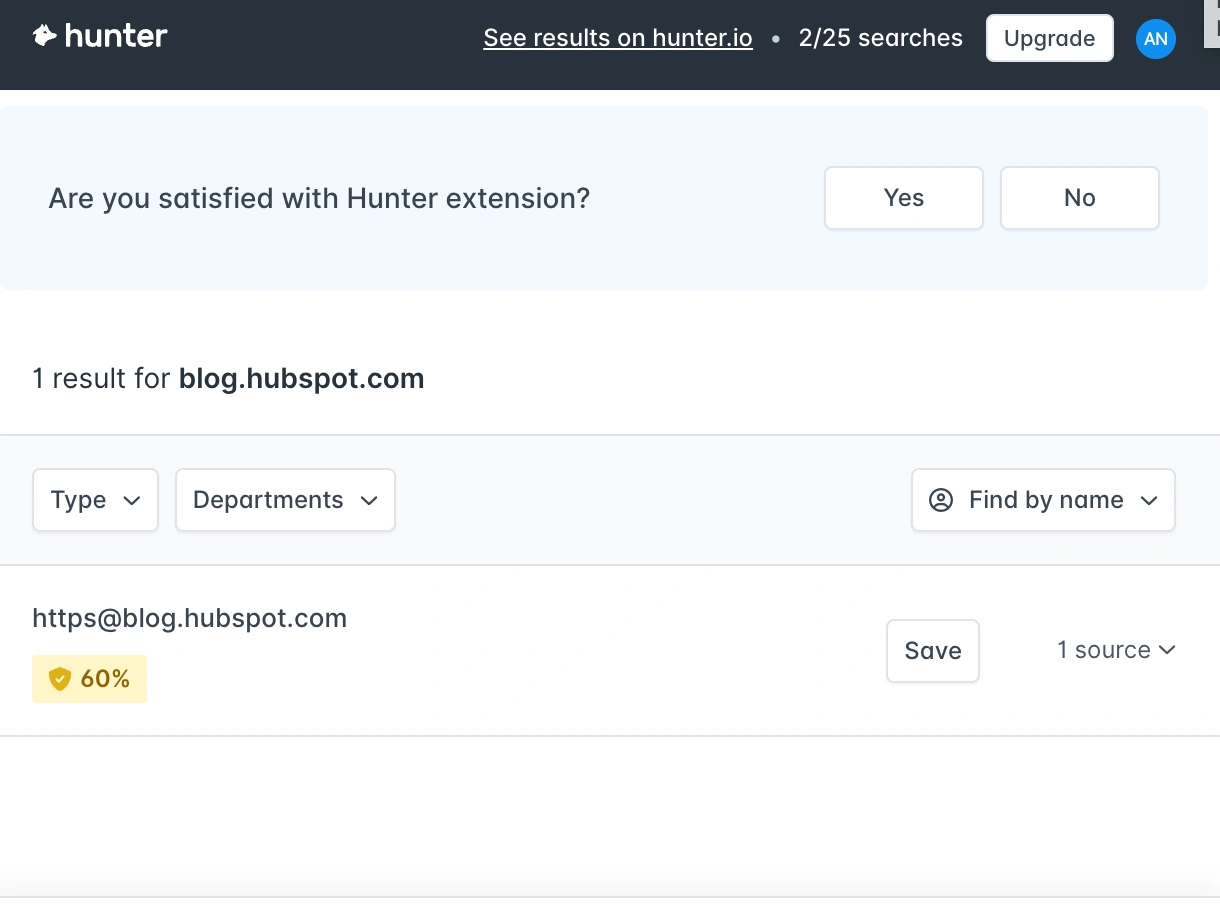
Once you have a personalized, well-researched pitch, send it to the site’s contact, typically the editor or content manager. Be polite, professional, and concise in your email.
Make sure to introduce yourself and explain your expertise in the topic area, mention the value your post will bring to their readers, and offer specific topic suggestions with brief outlines.
If you don’t receive a response after your initial outreach, it’s important to send a polite follow-up email after a week or so. Our link-building agency uses Mailshake for email automation. Keep it brief, and gently remind them of your initial email. Persistence is often key, as many editors manage multiple pitches.
If you don’t want to waste time and resources, read the guest post submission guidelines carefully. Go through the guidelines from start to finish. Pay attention to every detail, no matter how small, as missing a single requirement can lead to your submission being rejected.
Look for specific requirements such as content type, topic preferences or restrictions, word count, formatting, tone and style, images, and media. I think this is one of the manual link-building processes you should not automate.
If your goal is buying a backlink, make sure to check whether the publisher requires a fee for it. If you have any questions or if something is not clear, don’t hesitate to reach out to the right person for clarification.
Once your pitch is accepted, create the guest post according to the guidelines and ensure the content is top-notch. Make sure to include engaging, well-researched content that adds value to the audience, proper use of your anchor text linking back to your site, and a bio section (if allowed) with a link to your website or social profiles.
After your guest post is published, send a thank-you email to the editor. Share the post across your social media channels and engage with the readers in the comments section.

Select a topic that is relevant to the website’s niche but hasn’t been covered. Offer a new perspective or updated information. Make sure your article is informative, well-researched, and offers value to the reader. Use credible sources and back up your claims with data or examples.
Try to include a few internal links throughout the website to demonstrate your familiarity with their content and add value to their site. Additionally, you can add one or two external links to high-authority websites to make your link appear more natural.
Check grammatical errors and typos. Well-crafted and error-free content is more likely to be accepted for guest posts.
It’s not a secret that most webmasters typically charge a considerable fee to provide a dofollow backlink in a guest post. Of course, some websites accept guest posts at no charge.
For example, as a content writer specializing in sustainable living and eco-friendly practices, known for your expertise and practical advice, and having been featured in well-known publications and podcasts on environmental conservation, publishers may accept your guest posts without a fee.

In most other cases, there is a 45%-65% or higher chance that you will have to pay a fee to acquire a backlink. But what is the appropriate amount to pay for a single guest post? Well, there isn’t a one-size-fits-all answer. The cost of a backlink varies widely depending on several factors, including the quality of the website, industry, organic traffic, etc.
Guest blogging, like any other link-building technique such as link exchange or niche edits, comes with certain risks if not executed properly. I’ve mentioned before that Google has strict guidelines against unnatural link-building practices. If you don’t follow best practices, you put your website at some risk.
Remember. Once you submit a guest post, you often have limited control over the content, including how it’s presented and where it’s linked. The publisher might later remove, or nofollow your link, which can weaken the value of your guest post.
Indeed, sometimes it’s challenging to measure the ROI and effectiveness of guest posting but you must regularly fly through each published guest post to make sure it’s still active and brings the expected value.
Well, Your bio is an opportunity to build your personal brand. It adds credibility to your article and helps readers understand who you are and why they should value your insights. If you regularly contribute guest posts, maintaining a consistent bio across different platforms can help you connect with readers on a more personal level.
However, if your goal is to obtain a backlink from your bio, be aware that Google may assign more weight to contextual links. Additionally, links within the article could achieve a higher click-through rate (CTR), particularly if they are integrated into valuable and engaging content.
You can indeed get referral traffic from guest blogging, but it’s important not to expect massive amounts of traffic. Instead, focus on getting enough link juice. Keep in mind that the main advantage of guest blogging is usually SEO benefits.
Specifically, if your link is buried at the bottom of the post or only included in the author bio, it may get fewer clicks compared to if it’s embedded within the content in a natural, compelling way. However, many websites have strict rules about link placement, which can limit the click-through potential.
Here are the top 6 factors that generally have the biggest impact on boosting link juice, along with a realistic percentage influence (note: percentages are approximate and can vary depending on the site, niche, and SEO strategy):
Referral traffic from guest blogging is often strongest shortly after the post is published. As the post ages and gets pushed down by newer content, the referral traffic tends to decrease over time.
Guest posts don’t typically drive long-term or consistent traffic unless they’re on a high-traffic website with evergreen content that continuously attracts new readers.
It’s important to choose topics that overlap with the interests of your audience and the publisher’s readers. For example, if you run a fitness-related business and you’re guest posting on a health and wellness blog, writing about topics like “The Benefits of High-Intensity Interval Training (HIIT)” or “How to Create a Balanced Diet for Weight Loss” will appeal to both your audience and the blog’s readership. Both parties are interested in fitness, health, and well-being, making these topics highly relevant.

While relevance is key, it’s also essential to select topics where you can naturally include your preferred anchor text. For instance, if your preferred anchor text is “affordable fitness programs,” then a topic like “How to Stay Fit on a Budget” would allow you to naturally include your anchor text without disrupting the flow of the article.
Topics that are evergreen, meaning they remain relevant over time, are ideal for guest posts. Evergreen content is also more likely to be shared and referenced, which can enhance the long-term visibility of your guest post and strengthen your backlinks.
The ideal length of a guest post can vary depending on several factors, including the publisher’s requirements, the depth at which you want to cover the topic, and the time or resources you’re able to dedicate to the content. There’s no one-size-fits-all answer, but these factors will help guide you toward the right word count for your guest post.
Many publishers have specific guidelines for guest post submissions, including word count. Some may require shorter posts of 500-800 words, while others prefer more in-depth content ranging from 800 to 2,000 words.
Always check the publisher’s guidelines before you start writing to ensure you meet their expectations. Some sites value brevity, especially if their audience prefers quick reads, while others prioritize longer, more detailed articles that offer thorough insights.
From an SEO perspective, longer posts (typically 1,500+ words) tend to perform better because they provide more opportunities to cover a topic in-depth, include valuable keywords, and earn backlinks. However, content length alone doesn’t guarantee better rankings.
The complexity of the topic and the level of detail you want to provide should significantly influence the length of your guest post. If you’re covering a broad or intricate subject, such as “Advanced SEO Strategies for E-commerce Websites,” a longer post (1,500–2,500 words) may be necessary to fully explore the topic and offer value to readers. On the other hand, simpler topics like “5 Quick Tips for Better Blog Titles” may only require 700-1,000 words.
In most cases, one backlink to your domain is generally appropriate in a guest post. Many publishers have strict guidelines that only allow a single link back to your site, and some may even charge extra if you want to include more than one. Overstuffing a guest post with links can reduce the quality of the post and may harm the publisher’s credibility.
Even if you manage to secure more than one link from the same guest post, it doesn’t double the SEO value. Google and other search engines evaluate links based on referring domains, not the number of individual backlinks.
This means that whether you have one or multiple links from the same domain, the search engine will primarily recognize that you have one referring domain linking back to your site. Therefore, adding multiple links from the same domain won’t provide significantly more SEO benefits compared to just one link.
Sometimes, to make your guest post appear more natural and balanced, it’s a good idea to link out to authoritative, non-commercial sites like .edu or .gov domains, or other high-authority sources related to your topic.
There is no set number for how often you should post a guest blog, as it largely depends on your overall SEO goals, the resources you have available, and the opportunities you can find.
However, I would recommend integrating guest blogging as part of a balanced link-building strategy rather than relying on it exclusively. The frequency of guest posts should align with other strategies, making sure your backlink profile remains diverse and natural.
Some businesses might publish one guest post per month, while others may target 2-3 per quarter. What’s important is that you prioritize quality over quantity to avoid publishing on irrelevant or low-authority websites just for the sake of frequency.
Yes! However, it’s essential to avoid accepting guest posts just for the sake of selling or adding backlinks. Some guest authors may approach you purely to acquire backlinks, often resulting in low-quality or spammy content that can harm your SEO rather than help it. Google frowns upon blogs that publish guest posts solely for link-building purposes, especially if the content isn’t relevant, valuable, or authentic.
Set Clear Guidelines: Establish guest posting guidelines that ensure high-quality content. Include rules about originality, topic relevance, and the quality of outbound links. Make it clear that you won’t accept posts that are purely for promotional or link-building purposes.
Review Content Thoroughly: Vet every submission carefully. Make sure that the guest post offers real value to your audience and adheres to your site’s content standards. Avoid posts with excessive or irrelevant links.
Limit the Number of Links: If you do allow backlinks in guest posts, limit the number and make sure they are contextually relevant and not promotional. Some blogs limit links to the author bio section only, reducing the risk of manipulative links within the content.
Nofollow Links: Consider making all links in guest posts nofollow, especially if you’re concerned about the SEO implications. Don’t pass SEO value that could attract low-quality submissions solely for link-building purposes.